Complete Beginner’s Guide To The Ketogenic Diet
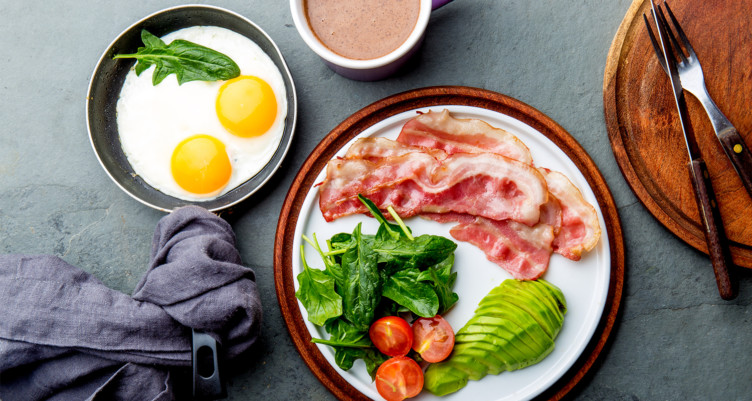
- The keto diet is made up of mostly fats, moderate protein and a small amount of carbs.
- Eating very few carbs puts you in ketosis, a metabolic state where your body burns fat instead of carbs for fuel.
- There are different types of keto diets, including the standard diet, cyclical keto and dirty keto. Before starting your keto diet journey, consider which path is right for you.
Eat fat to burn fat? It sounds counterintuitive, but that’s what makes the ketogenic diet so unique. Also called the keto diet, this low-carbohydrate, high-fat style of eating can help you feel energized and laser-sharp. It can even help you stay at a healthy weight—all while enjoying delicious, satisfying foods.
Read on to learn everything you want to know about this style of eating with our keto for beginners guide. We’ll cover the science behind how it works, detail the amazing benefits of the keto diet and offer tweaks that can help you manage minor keto side effects and stay in a state of ketosis.
What is the keto diet?
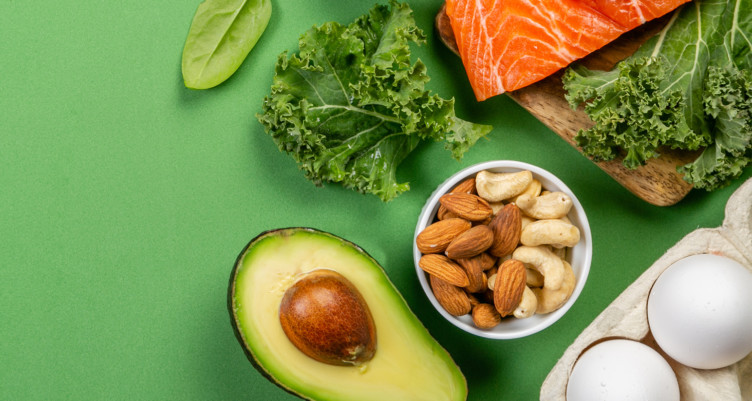
You may have heard the old low-fat weight-loss mantra, “Fat makes you fat.” It’s actually not that simple. In fact, your brain and body benefit from healthy fats, regardless of what diet you follow. Eating keto means consuming fewer carbs and more fats, which changes which fuel your body utilizes for energy (fat instead of carbohydrates).
Think of your body like a hybrid car. With the standard American diet, you generally rely on carbohydrates, like bread and pasta, for fuel. Your metabolism turns carbs into glucose for energy and stores the leftovers as glycogens in your muscles and liver. But just like a hybrid can run on gas or electricity, your body has another source to make energy: fat!
The keto diet revolves around keeping carbs at a minimum, fueling up with quality fats like grass-fed ghee and butter and consuming a moderate amount of high-quality protein sources. And by following this eating approach, you can reap the rewards of ketosis.
Related: Is Fat Good For You? Everything You Need to Know About Dietary Fats
What is ketosis?
By eating very few carbs, your body enters ketosis—a metabolic state where you burn fat instead of carbs for fuel.[1]
The keto diet is just one way to get your body to make ketones. Your body can also produce ketones when you’re intermittent fasting or taking keto supplements.
How does the keto diet work?

When your body uses ketones for fuel, you won’t experience the same energy crashes or brain fog as you do when you’re eating a lot of carbs. Let’s paint a picture: You know the feeling you get after having a big bowl of pasta for lunch? Your blood sugar levels crash after processing all those carbs, and the rest of the day becomes naptime.
However, that’s not the case on the keto diet. In metabolic fat-burning mode, your body can tap into fat stores for energy. Ketosis also helps the brain create more mitochondria, the power generators in your cells.[2] More energy in your cells means more energy to get stuff done.
More than 60% of your brain is fat, so it needs a steady supply of fat to function optimally.[3] The quality fats you eat on a ketogenic diet do more than feed your day-to-day activities—they also feed your brain.
How long can you follow the keto diet?
Keto is not a one-size-fits-all solution, so take advantage of your options. Don’t be afraid to switch things up. Starting with strict keto might work initially, but you may need to adjust your diet based on your lifestyle.
For example, if you train at high-intensity levels, consider a cyclical or targeted keto diet to strategically incorporate more carbs, which can help fuel a gym session or long run.
Related: What is Metabolic Flexibility and How Can You Achieve It?
Different types of keto diets
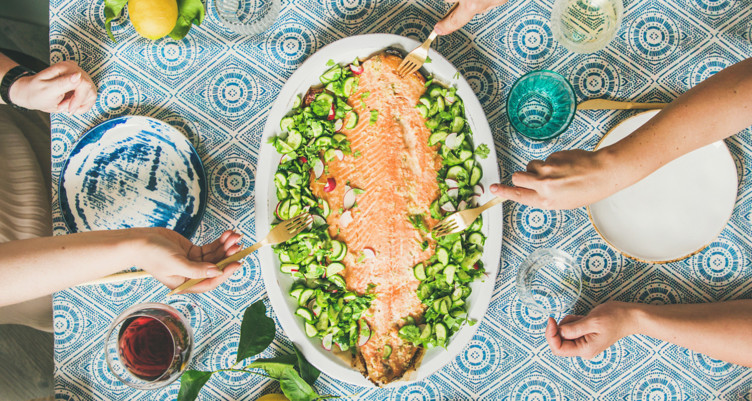
The keto diet for beginners seems like all fat, no carbs and lots of bacon and cheese—but that’s not the case. There are different approaches to this style of eating, and it’s in your favor to find what works for you.
Some people can stay in ketosis with slightly more carbs in their diets, depending on their activity level, and that’s perfectly okay. Here are a few different approaches to a high-fat, low-carb diet:
SKD (standard keto diet)
Standard keto diet rules typically dictate a macro breakdown of 75% fat, 20% protein and 5% net carbs a day, every day. Most traditional keto followers eat as few as 20g of net carbs per day.
CKD (cyclical keto diet)
With cyclical keto, you follow a standard keto diet most of the week. One to two days a week, however, you indulge in a “carb refeed,” in which you eat slightly more nutrient-dense carbs, like sweet potatoes and butternut squash. You might eat approximately 150g of net carbs during carb refeed days.
TKD (targeted keto diet)
How do you practice targeted keto? You follow the standard keto diet, but eat more carbs 30 minutes to an hour around workouts. The glucose is meant to boost performance, and you return to ketosis after the workout. If your energy levels are suffering in the gym during keto, this style of eating might work for you.
High protein
Similar to standard keto, this protocol allows for higher protein consumption. A typical macro ratio breaks down as 60% fat, 35% protein and 5% carbs.
Dirty keto
Dirty keto follows the same ratio of dietary fats, proteins and carbs as the regular keto diet, but with a twist: It doesn’t matter where those macronutrients come from. Dinner could be a bunless Big Mac with a Diet Pepsi.
Foods to avoid
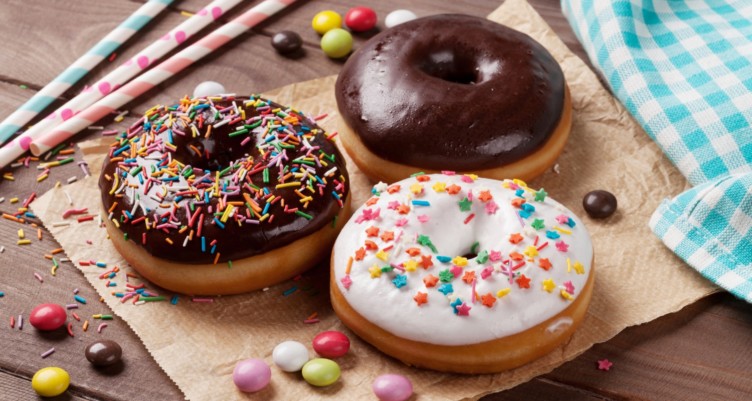
When you’re starting keto, the list of rules on what you can and can’t eat may seem daunting. It’s important to educate yourself about what high-carb foods can sneak up on you, such as legumes or starchy root vegetables.
Here are some foods you should steer clear of on keto:
- Grains and grain flours
- Corn
- Peas
- Most root vegetables
- Many fruits, including apples, bananas, grapes, mango and oranges
- Most beans and lentils
- Beer, sweeter wines and mixed cocktails with sugary syrups
- Sugar
- Low-fat dairy
Foods to eat
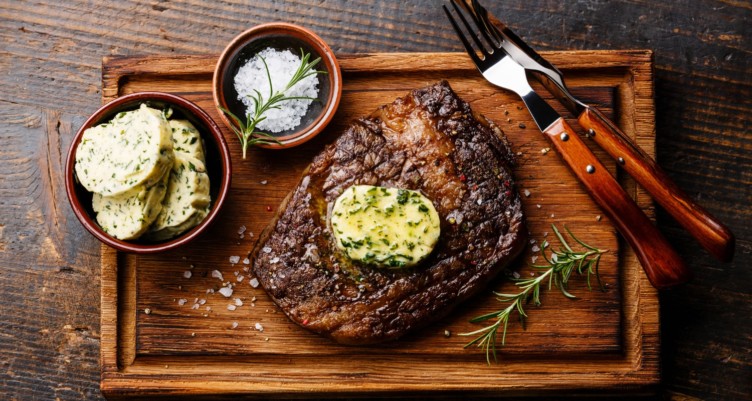
Set yourself up for success by stocking up on products and ingredients that will support your keto lifestyle.
Not sure where to begin? Our keto food list provides a full breakdown of what belongs in your pantry and fridge—from fresh leafy greens and pasture-raised meats and eggs to the power of almond flour. To help shape your shopping list for your next trip to the grocery store, we recommend organizing your list into these nine categories:
- Fats and oils, like MCT oil, avocado oil, extra virgin olive oil and coconut oil
- Proteins, like pasture-raised meats and eggs, grass-fed whey and collagen
- Vegetables, like dark, leafy greens, broccoli, Brussels sprouts and cauliflower
- Low-glycemic fruits, like berries (in small amounts), avocados, lemons and limes
- Nuts and seeds, like coconuts, macadamia nuts, pecans and walnuts
- Dairy, like grass-fed butter and ghee from grass-fed cows
- Beverages, like bone broth, coffee, coconut milk and mineral water
- Spices, seasonings and condiments, like coconut aminos, quality herbs and cacao powder
- Sweeteners, like monk fruit, stevia, allulose and erythritol.
How to do keto macros

If you’re someone that feels like more data is helpful, calculating your macros by using a macro calculator can be helpful when you’re starting out on a keto eating plan.
Every person is different, and calculating the exact nutrition you need in your keto diet plan can help you get started on the right track without wondering why your keto journey isn’t working optimally. Make it easy on yourself by tracking your carbs, fat and protein using food tracking apps like MyFitnessPal, Carb Manager or My Macros+.
You’ll also want to learn about calculating net carbs to make sure the “keto-friendly” product you’re about to consume really does fit in your keto diet, as well as whether sweeteners like stevia work well with keto. And, you should gain a better understanding of the difference between net and total carbs.
Remember to also focus on the quality of the foods you put in your body. Try taking a trip to your local farmers market, local co-op or high-quality supermarket to shop for proteins and produce. And since the keto diet focuses on fueling your brain and body with quality fats, you’ll want to do your research on how to consume this critical macronutrient.
Keto diet recipes
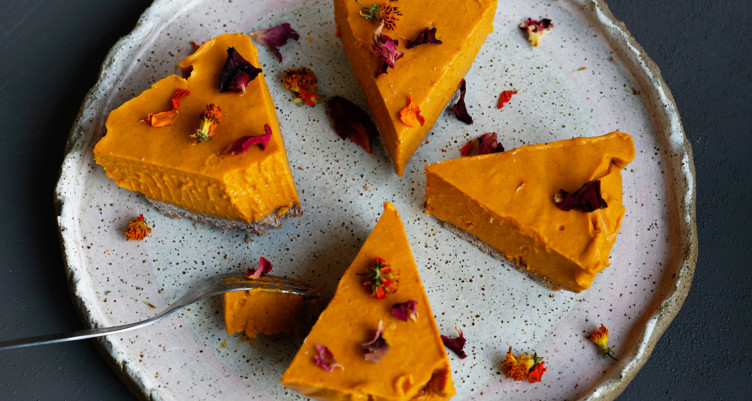
Ready to get your hands dirty in the kitchen, but don’t have a clue how to cook keto? We’ve got you covered with everything from coffee to brunch to dinners and snacks so you can kick your ketosis into high gear—no excuses necessary:
- Keto Coffee: Check out these keto coffee recipes to keep you laser focused throughout the day. We included everything from a simple, fat-fueled cup of coffee to mocha, iced and spiced recipes.
- Keto Brunch: From a low-carb version of eggs Benedict to pillow-soft, gluten-free cinnamon rolls, you’ll find everything you need to cook up (and devour) the perfect keto-friendly brunch eats.
- Keto Lunch: Easy and packable so you can head out the door, if you’re a lunch eater, these keto lunch ideas will help you power through each afternoon.
- Keto Dinner: Whether you want to make steak, chicken or seafood (get those omega-3 fatty acids up!) the star of the show, these delicious keto recipes will take weeknight dinner to another level.
- Keto Desserts: You can still satisfy your sweet tooth without the high amounts of sugar found in standard desserts. Low-carb brownie, cake and cookie recipes can taste just as great while providing better nutritional value.
- Keto Comfort Food: Craving time-tested classics like pancakes or pasta? You can create keto-friendly versions of comfort food recipes by using both low-carb flour substitutes and low-glycemic sweeteners.
- Keto Snacks: Snacking doesn’t seem to align with dieting. But these high-fat, low-carb snacks—which range from sweet to savory—fit perfectly into a keto meal plan.
Healthy keto snack options
If you get hungry between meals, here are some keto-friendly snack ideas to keep in mind:
- Olives
- Hard-boiled eggs
- Dark chocolate, especially when sweetened with keto-friendly sweeteners like stevia and erythritol
- Fat bombs
- Avocado
Ketogenic diet tips
Keto dieting doesn’t mean cutting back on your carb intake for just a day or two. It takes commitment to reap the rewards of fueling your body and brain with quality fats.
Incorporating more high-fat, low-carb recipes into your weekly meal plan is a great start. These strategies can help you stay on track with your keto diet for the long haul.
Quality fats to consider
Wondering which sources of high-quality fats to add to your keto shopping list? We have several recommendations to get you started:
- C8 MCT Oil: The most ketogenic MCT oil available—it’s converted into the most ketones of any MCT oil to become a superfuel for your body.
- Grass-fed ghee: While we are also advocates of grass-fed butter, this clarified alternative is great for high-heat cooking and, of course, blending into your coffee.
- Avocado oil: Rich in heart-healthy oleic acid and lutein (which is great for the eyes), avocado oil is flavorless, which makes it a great contender for both savory cooking and sweet, keto-friendly baked goods.
- Extra virgin olive oil: In addition to adding a distinct flavor to everything from salad dressing to sautéed veggies, olive oil promotes a healthy inflammation response and contains plenty of antioxidants.
- Pastured lard: Surprisingly high in monounsaturated fats (the good kinds found in avocado and olive oil) as well as stable saturated fats, lard provides a tasty fat for cooking that also helps support healthy cell membranes.
Stock your keto kitchen with ingredients and tools
Additionally, you’ll also need the tools to make magic happen in the kitchen. Here are a few that can make keto flavorful, easier and more enjoyable:
- Cast iron skillet
- Air fryer
- Instant Pot
- CrockPot
- Blender
Bulletproof tip: Worried you won’t have time to make a home-cooked, keto-friendly meal? Consider meal prepping on a specific day of the week. And if you make use of your Instant Pot or slow cooker, you can let them do all the work—while you’re at the office.
Test when you are in ketosis
You don’t need to set up an appointment with a healthcare professional to check your ketone levels. Do so right at home with urine sticks or a blood meter. You can even use a breathalyzer to test for acetone levels in your breath.
Whichever method you prefer, take advantage of the convenient ability to test whether you are in ketosis. That way, you can make any necessary changes to your diet to get back on track. The solution may be as simple as reducing your carb intake and cutting back on protein.
Health benefits of keto

Ketosis delivers a slew of health benefits, in addition to just burning body fat. Here are some of the ways following a ketogenic diet can have a positive impact:
Heart disease
Research shows the keto diet can help improve risk factors for heart disease, including blood sugar, blood pressure and body fat levels.[4][5]
Cancer
Emerging evidence suggests the ketogenic diet may be used as an additional treatment for cancer, as it has been shown to suppress tumor growth.[6]
Diabetes
Research shows the ketogenic diet can provide benefits for type-2 diabetics, as it can help improve glycemic control and assist with weight loss.[7]
Alzheimer’s disease
The keto diet has been shown to have beneficial effects for improving mitochondrial function and cellular metabolism, both important foundations for a healthy brain. Following a ketogenic diet has been associated with improved cognitive performance in elderly adults with Alzheimer’s disease.[8]
Epilepsy
The ketogenic diet also offers potential benefits for people with epilepsy. In fact, it was first created for controlling epileptic seizures.[9] Research shows following a high-fat, low-carb diet can help significantly reduce seizures in epileptic children.[10]
Fatty liver disease
The ketogenic diet may be beneficial for those with non-alcoholic fatty liver disease, as research shows it can significantly decrease liver fat content and hepatic insulin resistance.[11]
Parkinson’s disease
A randomized control trial conducted on 47 patients with Parkinson’s disease found the ketogenic diet group showed greater improvements in non-motor symptoms, such as urinary problems, pain, fatigue, daytime sleepiness and cognitive impairment, than the low-fat diet group.[12]
Polycystic ovary syndrome
A 12-week study conducted on 14 overweight women diagnosed with polycystic ovary syndrome (PCOS) showed following a ketogenic Mediterranean diet resulted in a significant decrease in glucose and insulin blood levels. The researchers concluded that a keto diet may be considered a valuable non-pharmacological treatment for PCOS.[13]
Brain injuries
While more research is needed, pre-clinical studies have demonstrated a ketogenic diet can help improve outcomes in traumatic brain injury (TBI) models, mild TBI/concussion models and spinal cord injury.[14]
Reduced inflammation
Inflammation is your body’s natural response to an invader it deems harmful. Too much inflammation is bad news because it increases your risk of health problems. A keto diet can reduce inflammation in the body by switching off inflammatory pathways and producing fewer free radicals compared to glucose.[15][16][17]
Potential keto side effects

Starting a keto diet is a radical change for most people. As such, there are some potential side effects to be aware of before you embark on this fat-fueled journey:
Keto flu
As your body adjusts to burning fat for fuel rather than glucose, it’s common to go through the keto flu during the first week or so. You might experience symptoms like brain fog, muscle aches, constipation, a metallic taste in your mouth or even an acetone odor in your breath (aka “keto breath”).
However, there are ways to get ahead of the dreaded keto flu:
- Hydrate
- Take your electrolytes
- Eat more quality fats
- Get your rest
- Adopt a destressing routine
- Cramps
- Reduced physical performance
Cramps
As insulin levels drop on the keto diet, the kidneys release electrolytes and fluid from the body. This can lead to electrolyte imbalances (especially sodium and potassium), muscle cramping and other keto flu symptoms. One of the most important keto rules to follow: make sure you’re getting enough sodium, magnesium, chloride and potassium or supplement with no-sugar-added electrolytes while you are adjusting to the keto diet.
Constipation
Starting a keto diet is a process, and it takes time for your body to adjust. You could experience some mild constipation initially as your gut bacteria changes and you get used to eating different foods. Staying adequately hydrated can help keep things running smoothly.
Reduced physical performance
Following a ketogenic diet may lead to reduced exercise performance, at least with high-intensity activities. However, studies demonstrate a significant improvement in exercise performance at intensity levels less than 60%.[18]
Common mistakes
Want to know how to do keto the right way? Avoid making the common mistakes associated with this diet, such as:
- Not drinking enough water
- Eating too much protein
- Consuming “hidden” carbs
- Indulging on low-carb sweets and snacks too often
- Focusing too much on maximizing ketone levels
Supplements

Even if your meals are full of quality fats and protein, you can still use supplements to fill in any nutritional gaps. So, what are some of the best ones to pair with the ketosis diet?
Here are a few to include in your supplement regimen:
- MCT oil
- Magnesium
- Methyl folate
- Electrolyte supplements
Is keto right for you?
Following a high-fat, low-carb approach offers many potential health benefits, including mental clarity, focus and energy, but you may need the support of your healthcare provider if you are on medication or have a preexisting condition.
Remember, you don’t have to go all-in right away. Start with reducing your carbohydrate intake on a weekly basis before you aim for the standard keto macros. Evaluate your schedule and exercise routine to determine if a cyclical or targeted keto approach would work better. The great thing about keto is you can adapt it to fit your lifestyle.
Additional ketogenic diet resources
Still have questions about the keto diet? We have an arsenal of helpful guides to help you navigate all aspects of this fat-fueled way of eating.
1. Is Keto Safe Long-Term?
Wondering if it’s OK to stay keto for the long haul? Learn how to achieve long-term success with tips on how to push through a plateau, what you should have in your kitchen and recipes to round out your weekly meal plan.
2. 7 Reasons You’re Not Seeing Results on Keto
Struggling to make progress on the keto diet? You’re not alone. This blog explores some of the common reasons for not seeing results. More importantly, it offers useful tips to help push past a plateau.
3. Vegetarian Keto: Can Vegetarians Go Keto Safely?
Although many keto recipes include animal-based protein sources, not all of them have to make meat the main attraction. In fact, it’s entirely possible for vegetarians to enjoy the benefits of swapping out carbs for quality fats. Everything you need to know about vegetarian keto is one click away.
4. Longer Fasting on Keto for Self-Growth
Keto and intermittent fasting (IF) go hand-in-hand, but you can also experience even more benefits when you graduate to longer fasting on keto. Find out if longer fasting may be complementary to your keto diet journey.
If you’re considering keto for weight loss, make sure to get the skinny on IF, too. Our comprehensive beginner’s guide on intermittent fasting will teach you everything there is to know about this progressive, Bulletproof-approved dieting practice.
Sign-up for the Bulletproof mailing list and receive the latest news and updates!
This is an updated version of an article originally published October 2019.



